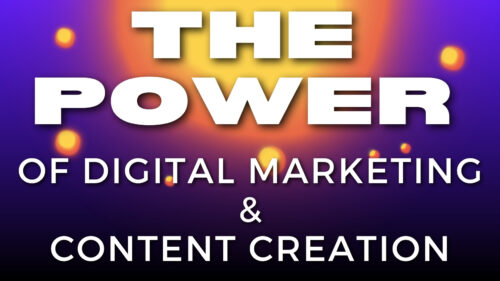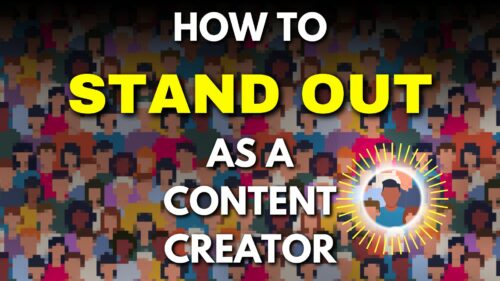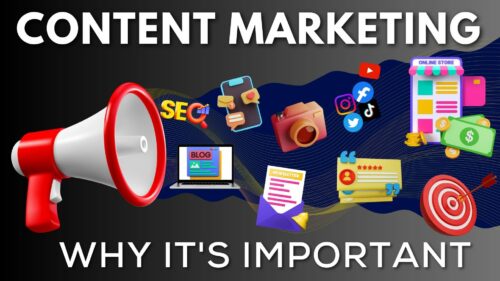How to Create a Winning Content Strategy for Your Brand
You need to create a winning content strategy for your brand if you want to win online in today’s competitive digital landscape.
Whether you’re experienced or just starting, learning how to create a compelling content strategy matters if you want to achieve your goals.
So, in this blog post, we’ll tell you the secrets behind developing a powerful content strategy that engages, converts, and grows your brand!
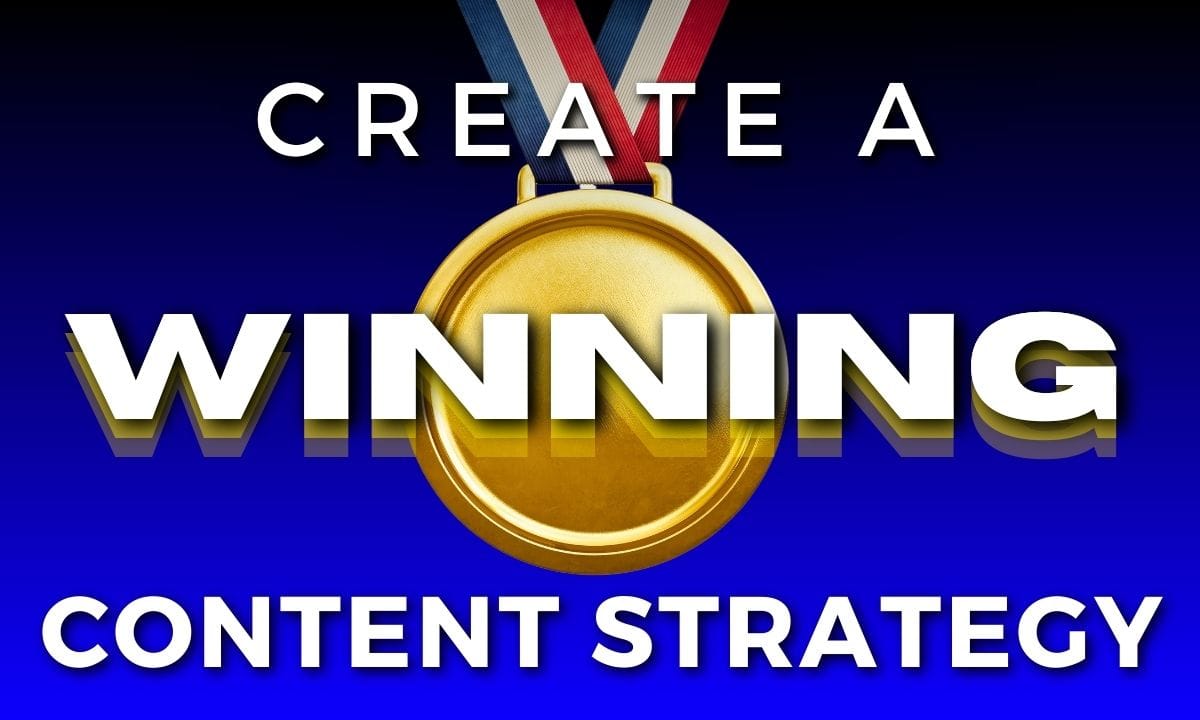
What Is a Content Strategy?
A content strategy is a high-level approach taken by an organization to create and market its content.
It involves selecting topics, determining the content format, writing style, design, and promotion.
The ultimate goal of a content strategy is to create valuable, findable, and meaningful content that meets both the organization’s goals and the needs of its users.
The process of creating a content strategy involves defining requirements, identifying user needs, outlining the brand’s message, and conducting research.
Key elements to include in a content strategy are guidelines for content creation, a content calendar, roles and responsibilities for content creation and updates, and metrics to measure success.
Why Do You Need a Content Marketing Strategy?
Having a content marketing strategy is crucial for any brand looking to succeed online.
Without a strategy, brands risk creating content that doesn’t resonate with their audience, wasting resources on ineffective tactics, and missing out on potential leads and search rankings.
But, with a well-thought-out content strategy, brands can ensure their content is purposeful, on-brand, captures their unique voice, and release content at the right time to achieve their goals.
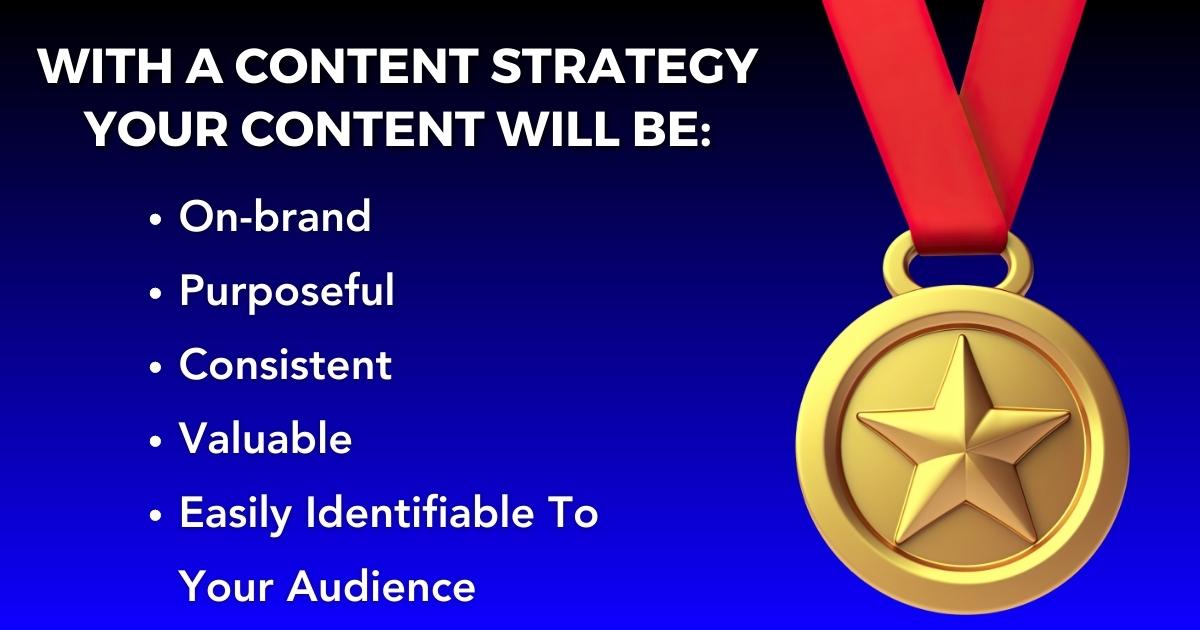
Problems Brands Face Without A Content Strategy:
- Lack of Direction: Without a content strategy, brands risk creating content that doesn’t align with their overall business goals or target audience.
- Inefficient Use of Resources: Brands without a strategy may waste time and money on ineffective tactics, resulting in a poor return on investment.
- Inconsistent Messaging: Without a content strategy, brands may struggle to maintain a consistent voice across all their marketing channels.
- Missed Opportunities: Brands without a strategy may miss out on potential leads and search rankings because they aren’t creating content that resonates with their audience.
How a Content Strategy Solves These Problems:
- Provides Direction: A content strategy helps brands align their content with their overall business goals and target audience, ensuring that every piece of content has a purpose.
- Maximizes Resources: A content strategy outlines the most effective tactics for reaching the target audience, helping brands make the most of their resources.
- Maintains Consistency: A content strategy captures the brand’s unique voice and ensures that it is consistent across all marketing channels.
- Increases Opportunities: A content strategy helps brands create content that resonates with their audience, increasing the chances of generating leads and improving search rankings.
In the following sections, we will provide tips on how to create a winning content strategy that aligns with your brand’s overall business goals and target audience.
Questions To Ask Before Creating a Content Strategy
What Are The Goals Of Your Content Strategy?
Setting goals is important when creating a content strategy. Without clear goals, it’s difficult to know what you’re trying to achieve or how to measure success.
When setting goals for a content strategy, there are several factors you should consider.
First, you may want to focus on increasing brand awareness, which can help attract new customers and build your reputation. Second, building brand loyalty is important for retaining customers and generating repeat business.
Generating leads is another key goal, as it can help you grow your customer base and increase revenue. Improving search engine rankings is also important, as it can help your content reach a wider audience.
Who’s Your Target Audience?
You need to figure out who your target audience is.
It goes beyond knowing their demographics and requires understanding their needs and motivations. To identify your target audience, you should define three key points.
Consider your audience’s experience level and whether they’re beginners or topic experts. This will help you determine the level of detail and complexity to include in your content.
Then, determine if your content relates to what you sell and if it would be impactful to your audience.
And, think about whether your content naturally relates back to your services and if it solves their problems or presents value to guide them toward a decision.
By focusing on your top 5 audiences and looking at their psychographics, not just demographics, you can create content that resonates with them.
Remember, you are not your audience, so focus on their needs and motivations to create relevant content that captures their attention.
What Channels And Platforms Does Your Audience Like?
To determine which channels and platforms your audience prefers, ask yourself:
- Who do you want to reach?
- What do they care about?
- How and where do they like to consume information?
Once you have the answers to these questions, you can choose the most suitable channels and platforms for your content strategy.
Some examples of different channels and platforms include blogs/websites, YouTube, social networks, email, podcasts, Q&A sites like Quora and Reddit, and guest posts on other sites.
To make the right choice, you should base it on your answers to the questions above and what makes the most sense for your business.
What Type Of Content Should You Create?
Blog posts are great for building brand awareness, nurturing leads, and retaining customers.
Videos can be used to educate and engage audiences, while infographics are ideal for presenting complex data in a visually appealing manner.
Social media posts can be used to promote content and engage with followers, while podcasts are great for building thought leadership and establishing a loyal audience.
Brands like Ahrefs for example, mainly focus on creating blog posts, wiki articles, and interactive tools to educate and retain customers, while on Twitter, they share product updates and informative threads.
How Will Your Content Provide Value To Your Audience?
To figure this out, you must address the following before crafting a piece of content.
- Determine who your target audience is and what their pain points are.
- Analyze their favorite resources and check which type of sites they visit.
- Identify the unique value you provide to your audience with your content and how you stand out from other content creators.
- Decide how content marketing will bring your business closer to its goals and what resources you need to invest in your content strategy.
- Measure the effectiveness of your content by analyzing its performance and ensuring it aligns with your business objectives.
By going over these before making a new piece of content, you can tailor your content to your audience’s needs, provide them with valuable information, and drive your business forward.
How Often Should You Publish New Content?
One of the key elements of a successful content strategy is consistency in publishing new content.
The ideal frequency for publishing new content will vary depending on the brand, its industry, and its target audience. However, there are some general guidelines that can help you determine the right posting frequency for your brand.
Here are some general guidelines:
- Blog Posts: 2-4 times per week
- Social Media: 1-2 times per day
- Video: 1-2 times per week
- Email Newsletters: 1-2 times per month
Of course, these are just guidelines.
The best posting frequency for your brand will depend on your specific circumstances. But by following these general tips, you can start to create a content publishing schedule that works for you.
How Will You Measure Success?
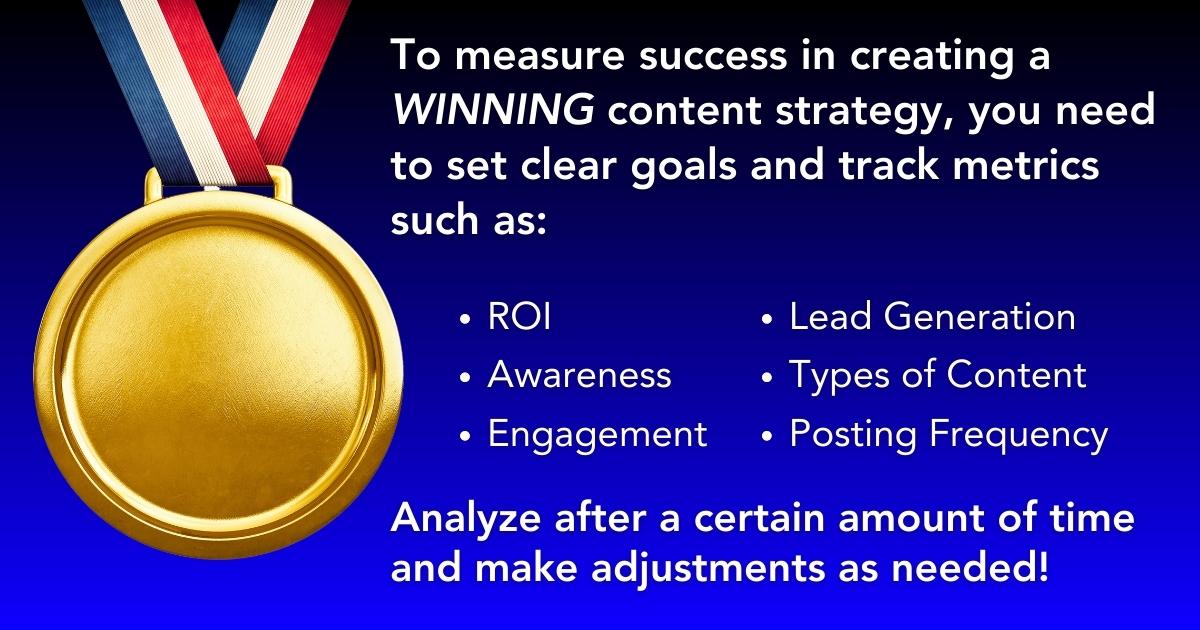
Also, consumption and sharing metrics can help you understand how audiences are interacting with your content. To ensure your content strategy is aligned with your overall business goals, organize your goals in a hierarchical fashion and prioritize long-term strategic goals.
How Will You Repurpose And Optimize Content?
Repurposing and optimizing content is a big component of a winning content strategy. By repurposing content, you can breathe new life into old content and maximize its potential.
But Before You Start Repurposing And Optimizing, Ask Yourself:
- Which pieces of content have been the most successful in the past? Identify your top-performing content and consider how you can repurpose it to reach a wider audience.
- What platforms should I use for repurposing? Think about where your audience spends their time online and choose platforms that align with your brand’s message. For example, if your target audience is active on Instagram, consider repurposing your content into visually appealing posts.
- How can I ensure that repurposed content aligns with my brand’s message? It’s essential to maintain consistency in your brand’s voice and messaging when repurposing content. Make sure that any repurposed content accurately reflects your brand’s values and mission.
- What format should I use for repurposing? There are many different ways to repurpose content, from turning a blog post into a video to creating an infographic from a podcast episode. Consider what format will best resonate with your audience and make the most sense for the content you’re repurposing.
- How can I optimize repurposed content for maximum impact? Once you’ve repurposed your content, optimize it for each platform you plan to use. This might include adjusting the format, tone, or length of the content to fit the platform.
Asking these questions and taking the time needed to repurpose and optimize your content can extend its lifespan and help you reach a wider audience.
Because content isn’t set it and forget it.
Nope.
Optimization is key if you want to keep it relevant and effective over time.
What Resources And Budget Do You Have Available?
Without a clear understanding of what resources you have at your disposal and how much budget you can allocate, your content marketing efforts may fall short of your expectations.
To Determine The Resources And Budget You Have Available, Ask:
- What is the available budget for content and creative, and how will it be broken down between production/development and distribution?
- How will my content get created? Will it be in-house, outsourced to agencies and/or freelancers, or a hybrid model?
- What talent do I need on a given creative team, such as art direction, photography, video, mobile, interactive, copy, etc.?
- What processes and technology are needed to operationalize my strategy?
How Will You Stay Up To Date On Industry Trends And Adjust Your Strategy Accordingly?
In order to stay up to date on industry trends and adjust your content strategy accordingly you need to find out:
- What are the key sources of information for your industry? Are there specific publications, websites, or thought leaders that you can follow?
- How often should you be checking for updates? Is it daily, weekly, or monthly?
- Who on your team will be responsible for monitoring and analyzing industry trends? Will it be one person or a team effort?
- How will you incorporate these trends into your content strategy? Do you need to create new content or update existing content?
How To Create a Winning Content Strategy For Your Brand
1. Understanding Your Brand’s Goals And Audience
It’s essential to understand who your audience is, what they care about, and how they consume information.
By following a few simple steps, you can determine your brand’s goals, identify your target audience, and create a content strategy that aligns with your brand’s values and resonates with your audience.
I’m going to provide you with an ordered list of steps to help you create a winning content strategy. We will also use relevant examples to illustrate our points.
Identify Your Target Audience
To create a winning content strategy, you need to know who your target audience is. For B2B marketers, this will include multiple people, such as the buyer, the end-user, the business owner, and experts who consult on the decision.
For B2C products with less complicated buying cycles, you will want to gain a sense of who makes the purchase and who can help you amplify your content. You’ll also want to know your audience’s lifestyle, concerns, problems, and needs.
Example: Red Bull creates content for audiences, not just buyers. They focus on topics their audience is interested in, like extreme sports and once-in-a-lifetime experiences. This approach helps consumers identify with the brand and encourages loyalty that stretches far beyond buying the drinks.
Understand What Your Audience Cares About
Once you’ve identified your target audience, you need to understand what they care about. Think about the problem your business solves, your prospect’s pain points, or the things related to either of these that your intended audience will spend time learning about.
This will help you create content that resonates with your audience.
Example: Red Bull’s owned media doesn’t focus on its product; it covers topics the audience is interested in, like extreme sports and once-in-a-lifetime experiences.
Determine How And Where Your Audience Likes To Consume Information
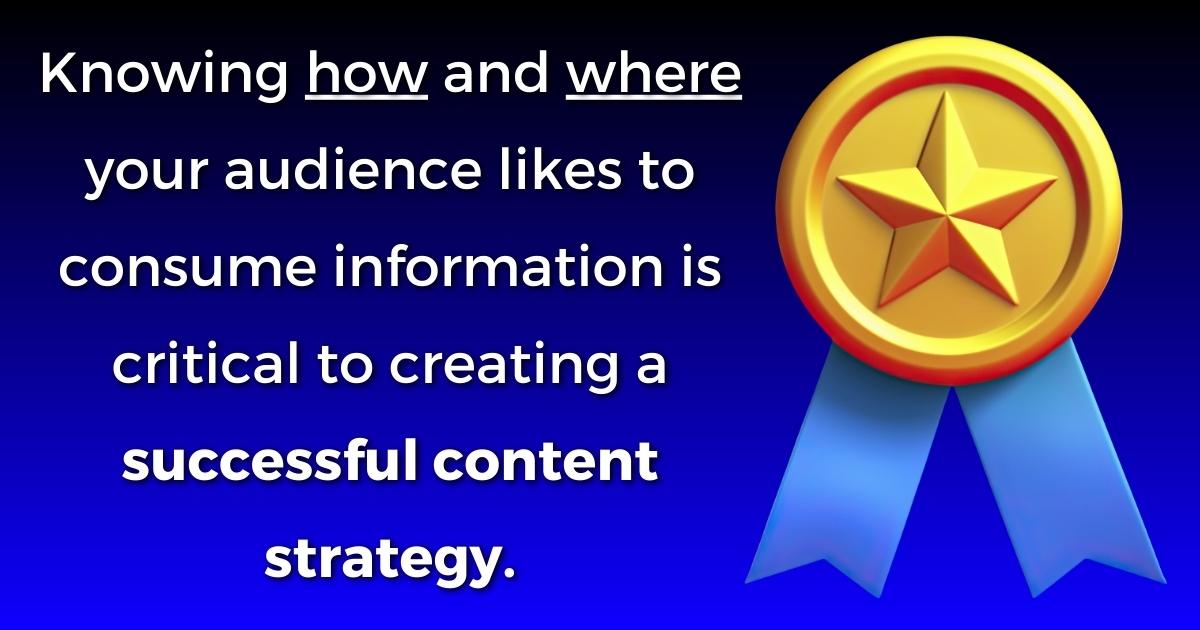
- Is video big in your industry?
- Does your audience tend to spend time on certain social media platforms, like Reddit or Instagram?
- When do they turn to Google for information?
- Are they likely to subscribe to a newsletter?
Example: Red Bull’s content is heavily focused on video and social media, as these are the preferred channels for their target audience. They also use influencer and celebrity endorsements to reach a wider audience.
Choose The Right Media Types And Delivery Channels
Based on the information you have gathered in the previous steps, you can choose the right media types and delivery channels for your content strategy.
This may include video, audio, images, long-form blog posts, influencer or celebrity endorsements, and delivery channels such as SEO, paid search, social media, email, forums, and PR. It is also essential to consider what stage of the sales process your intended audience is in (top, middle, or bottom of the funnel).
Example: Red Bull is a media company that happens to sell energy drinks. They use their owned media channels, like their website and social media, to distribute their content.
By following the steps outlined above, you can determine your brand’s goals, identify your target audience, and create a content strategy that aligns with your brand’s values and resonates with your audience.
2. Audit Your Existing Content
Auditing your existing content is a crucial step in creating a winning content strategy.
With approximately 1.6 billion websites and over 70 million blog posts published each month, it’s easy to get lost in the crowd.
Conducting a content audit allows you to analyze your content, assess its performance, identify gaps, and analyze your audience.
Here’s A Step-By-Step Process For Auditing Your Content:
- Collect all your existing content and create an inventory in an Excel doc.
- Analyze data sets to understand the actual state of your content. Look for the kind of content that attracts your audience and brings you the best results.
- Use analytics to see which pages produce more and better traffic based on your KPIs. Look at dwell time metrics like bounce rate and time on site.
- Analyze your loyal readers’ behavior by using the New vs. Returning report under “Audience” in Google Analytics.
- Use on-site search topics to help develop your content plan and understand the level of technicality that your audience is looking for.
- Repurpose the audit as a report with prioritized pages to create, edit, retire, or migrate to a new CMS, all depending on the project.
Conducting a content audit may feel tedious and tiresome, but it’s necessary.
It helps you understand what works for your audience and your brand, enabling you to create an effective content marketing strategy.
3. Do Some Persona Research
Conducting persona research allows you to create content that resonates with your target audience.
It drives engagement, conversations, and conversions.
Steps To Take When Conducting Persona Research For Your Brand’s Content Strategy:
- Identify Your Target Buyer: Determine the person who is most likely to benefit from your offering and is most likely to pay for it.
- Gather Demographic and Behavioral Characteristics: Be as specific as possible in identifying your audience’s shared habits and values.
- Conduct Market Research And Qualitative And Quantitative Customer Research: Use a mix of research methods to gain a comprehensive understanding of your target audience.
- Create Customer Personas: Document the personality profiles of your target audience and back them up with research and data.
- Uncover a Unique Insight About Your Target Customer: Find a unique perspective that the rest of the industry overlooks or under-appreciates.
By conducting persona research, you’ll be able to create content that speaks directly to your target audience, leading to greater outcomes.
4. Look For Your Unique Position Or Resources
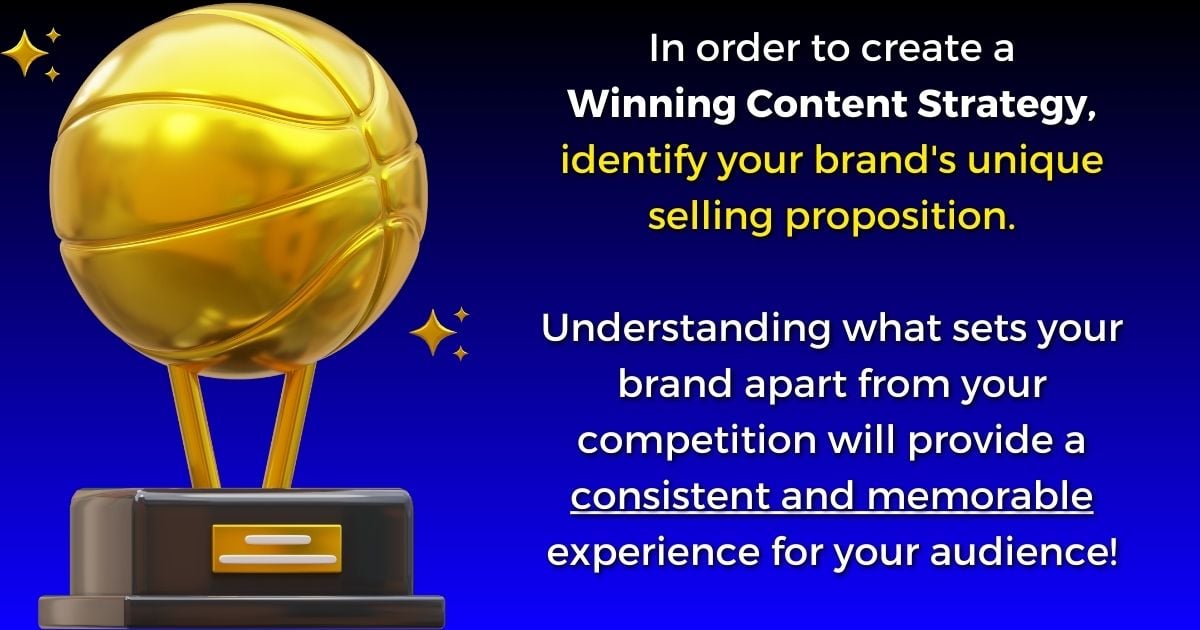
Several methods exist for identifying your brand’s unique position. For example, analyzing your competition, conducting a SWOT analysis, and identifying your brand’s core values.
Knowing your competition allows you to see what they’re doing well and where there may be opportunities for your brand to stand out.
A SWOT analysis helps identify your brand’s strengths, weaknesses, opportunities, and threats. Identifying your brand’s core values provides a foundation for creating content that aligns with your brand’s mission and resonates with your audience.
Also, resources like customer feedback, industry trends, and internal expertise can be used to create a unique content strategy.
5. Estimate Your Investment (Time vs. Money)
Estimating the investment required for your content strategy matters a lot.
Without proper planning, you might end up wasting time, money, and resources on ineffective tactics.
So, have a clear idea of what you need to invest in, and how much time and money it will take to execute your plan.
Here’s A Breakdown Of The Different Aspects That Require An Investment:
- People: This includes the team members who will be involved in creating and promoting your content. You need to estimate how much time and money you’ll need to hire, train, and manage your team. Consider the following factors:
- The skills and experience do you need in your team
- The number of team members you need
- Will you hire in-house or outsource?
- The cost of hiring and training team members
- How much time will it take to manage your team?
- Products and services: You’ll need various tools and services to create, publish, and promote your content. Some of the essential ones are:
- Content management system (CMS)
- Research tools
- Content creation tools (e.g., design, video editing, etc.)
- Social media management tools
- Email marketing software
- Paid promotion platforms (e.g., Google Ads, Facebook Ads, etc.)
To Estimate The Investment Required For These Products And Services, Consider The Following:
- What tools and services do you need?
- What is the cost of each tool or service?
- How much time will it take to set up and learn how to use each tool?
- Time: Creating and promoting content takes time. You need to estimate how much time you’ll need to invest in each aspect of your content strategy. Some of the critical factors to consider are:
- How often will you publish content?
- How long will it take to create each piece of content?
- How much time will you need to promote your content?
- How much time will you need to analyze and optimize your content?
Balancing time and money is crucial for maximizing the impact of your content strategy.
For example, you might need to invest more time in creating high-quality content if you have a limited budget for paid promotion. On the other hand, if you have a larger budget, you might want to invest in paid promotion to reach a broader audience quickly.
6. Choose The Right Channels For Content Distribution
Identify your audience demographics and where they spend their time online. This will help you select platforms that are popular among your target audience.
Then, consider the type of content you want to distribute and which platforms are suitable for it. For example, video content is best distributed on YouTube, while visual content may perform well on Instagram.
Finally, analyze the performance of your content on each platform and use this data to refine your content distribution strategy. It’s important to test different channels and tactics to find what works best for your business.
7. Figure Out What Kind Of Content You Want To Make
Focus on defining your goals, which will help you make decisions about your publishing schedule, target audience, and processes.
Then find audience-focused content topics by researching competitor blogs, and online communities using tools like BuzzSumo.
Choose a content structure and format that works best for you, whether it be a blog post, YouTube video, podcast, or a mixture of them.
Once done, create amazing content that addresses your audience’s needs and preferences.
8. Plan Your Content Production – Develop An Editorial Plan
Now we need to create a roadmap that guides you through the content creation process, from ideation to publishing.
Having a plan in place helps you stay organized, prioritize tasks, and ensures your content aligns with your brand’s overall goals and objectives.
Here’s A Step-By-Step Guide On How To Develop An Editorial Plan For Your Content Production Strategy:
- Define your content goals: What do you want to achieve with your content? Is it to drive traffic, generate leads, or increase brand awareness? Whatever your goals are, make sure they are specific, measurable, and aligned with your overall business objectives.
- Choose your content formats: Depending on your target audience and content goals, you’ll want to choose the right content formats. This could include blog posts, videos, infographics, social media posts, podcasts, and more.
- Develop a content calendar: Once you’ve identified your target audience, content goals, and formats, it’s time to create a content calendar. This calendar should include the topics you’ll cover, the format for each piece of content, the due date, and the publishing date. You can use tools like a simple calendar, ContentCal, or SEMrush Marketing Calendar to help you create and manage your content calendar.
- Assign roles and responsibilities: Who will be responsible for creating each piece of content? Who will be responsible for publishing it? Make sure to assign roles and responsibilities to each team member involved in the content production process.
- Monitor and evaluate performance: Regularly monitor and evaluate the performance of your content. This will help you identify what’s working and what’s not, so you can make adjustments to your strategy as needed.
9. Creating Engaging And Relevant Content
Without resonating with your target audience, your content will not attract or retain their attention.
To ensure your content is both engaging and relevant:
- Stay up-to-date with social media trends. Monitor which platforms your audience is using and which types of content are performing well. Incorporate these trends into your content strategy to stay relevant and engaging.
- Incorporate multimedia elements into your content. Use visuals, such as images and videos, to make your content more visually appealing and shareable. This can also help break up long blocks of text and make your content easier to consume.
- Brainstorm creative and unique ideas. Think outside the box and consider how you can provide value to your audience. This can be through educational content, entertaining content, or content that solves a problem they may be facing.
10. Measure Your Success And Make Improvements If Needed
Without analyzing user feedback and tracking key performance indicators (KPIs), it’s impossible to know what’s working and what’s not.
Here Are Some Essential KPIs You Can Use To Measure Your Success:
Total Website Traffic – This KPI measures the number of visitors to your website. It’s an important metric because it shows how effective your content is at attracting people to your site. You can use tools like Google Analytics to track this metric.
Engagement Rates – Engagement rates measure how people are interacting with your content. This includes likes, comments, shares, and clicks. It’s an important KPI because it shows how well your content is resonating with your audience. You can use social media analytics tools to track this metric.
Conversion Rates – Conversion rates measure how many people are taking specific actions on your website, such as signing up for a newsletter or making a purchase. It’s an important KPI because it shows how effective your content is at driving desired actions. You can use tools like Google Analytics or HubSpot to track this metric.
Backlinks and Mentions – Backlinks and mentions measure how many other websites are linking to your content or mentioning your brand. It’s an important KPI because it shows how well your content is resonating with other websites and how much authority your website has. You can use tools like Ahrefs or Moz to track this metric.
Once you have collected data on these KPIs, it’s essential to analyze the data and make improvements to your content strategy.
A Process For Analyzing The Data:
- Identify Trends – Look for patterns in the data to identify what’s working and what’s not. For example, if your website traffic is increasing but your engagement rates are low, it may be time to re-evaluate your content.
- Identify Areas for Improvement – Look for areas where you can make improvements to your content strategy. For example, if your conversion rates are low, it may be time to re-evaluate your calls-to-action or landing pages.
- Create an Action Plan – Based on your analysis, create an action plan for making improvements to your content strategy. This could include creating new content, updating existing content, or changing your distribution channels.
When analyzing data, some common issues may arise, such as data overload or not knowing how to interpret the data.
To address these issues, consider using data visualization tools to make the data more accessible and understandable.
11. Take A Look At Your Competition
Looking at your competition is a crucial step in creating a winning content strategy for your brand.
By understanding what your competitors are doing, you can identify gaps in the market and tailor your content to better resonate with your target audience.
To do this, research keywords and identify your competitors’ content strengths and weaknesses. You can use tools to see which keywords they rank for and how their posts are performing on social media.
Next, evaluate their messaging and brand values, and plot them on a graph alongside your own. Then, identify opportunities to improve your messaging and create content that fills the gaps in the market.
Content Strategy FAQs
What Are The Best Tools For Creating a Content Strategy?
There are various tools available to help you develop a winning content strategy, and below are some of the best ones:
- HubSpot is a suite of marketing tools that includes a content planning tool, a content analytics tool, and a content management system. HubSpot can be used to create and manage your content calendar, track your content performance, and publish your content to your website or blog.
- SEMrush is an SEO tool that can be used to research keywords, track your website’s ranking, and analyze your competitors’ content. This information can be used to identify the best keywords to target with your content and to see what type of content is performing well for your competitors.
- Canva is a graphic design tool that can be used to create images, infographics, and social media graphics. Canva can be used to make your content more visually appealing and to help you stand out from the competition.
- Trello is a project management tool that can be used to organize your content ideas, track your progress, and collaborate with others. Trello can be a helpful tool for managing the entire content creation process, from brainstorming to publishing.
- Google Analytics is a free tool that can be used to track website traffic and engagement. This information can be used to identify what topics are resonating with your audience and what content formats are performing well.
- Grammarly This tool helps you edit your content for grammar and style.
- Adobe Premiere Pro This tool is excellent for editing videos.
What Types Of Content Should I Create For My Brand?
A brand can create various types of content to engage with its audience. These types include written content, visual content, and audio content. Written content can take the form of blog posts, articles, case studies, and eBooks, among others. Create a diverse range of content to keep your audience engaged and interested in your brand.
What Are Some Examples Of Successful Content Strategies?
Successful content strategies involve creating relevant and interesting content, organizing it effectively, and distributing it through appropriate channels for the target audience. Examples of effective content strategies include HubSpot’s use of a blog to address the needs of its audience, Red Bull’s creation of extreme sports content to target its adventurous audience, and Blendtec’s “Will it Blend?” video series to showcase its product’s durability back in the day.
How Do I Measure The Success Of My Content Strategy?
There are a number of different metrics that you can track to measure the success of your content strategy, but some of the most important include:
- Website traffic: This is a good measure of how many people are seeing your content. You can track website traffic using Google Analytics.
- Social media engagement: This measures how people are interacting with your content on social media. You can track social media engagement using tools like Buffer or Sprout Social.
- Lead generation: This measures how many people are taking action as a result of your content, such as signing up for your email list or downloading a white paper. You can track lead generation using tools like HubSpot or Salesforce.
- Conversion rate: This measures the percentage of people who take a desired action, such as making a purchase or signing up for a free trial. You can track conversion rates using Google Analytics.
- Return on investment (ROI): This measures the financial benefit of your content strategy. You can calculate ROI by dividing the total revenue generated by your content by the total cost of creating and distributing your content.
What Are Some Tips For Creating a Content Strategy For My Brand?
- Define your goals and get buy-in from stakeholders.
- Research your target audience and map out how buyers will interact with your content.
- Create content in different formats and publish it on various platforms.
- Collaborate with influencers to co-create content.
- Assign roles and put everything on a content calendar.
How Important Is Market Research In Creating a Content Strategy?
Market research plays a crucial role in creating a successful content strategy. It helps businesses to identify their target audience, understand their needs, and create content that resonates with them. Without conducting market research, businesses may end up creating content that fails to engage their audience. This can result in wasted time, effort, and resources.
3 Resources YOU Can Use to Grow Your Business
1. Content Done Right: A done-for-you system you can follow to create high-quality content and social media posts each week.
2. SEO and Digital Marketing: We’ll take care of your SEO, website, and marketing. So your brand, products, and services look great online.
3. Join 162+ Brands and Business Owners by subscribing to our newsletter. You’ll get our latest resources, guides, and actionable tips to grow online.

